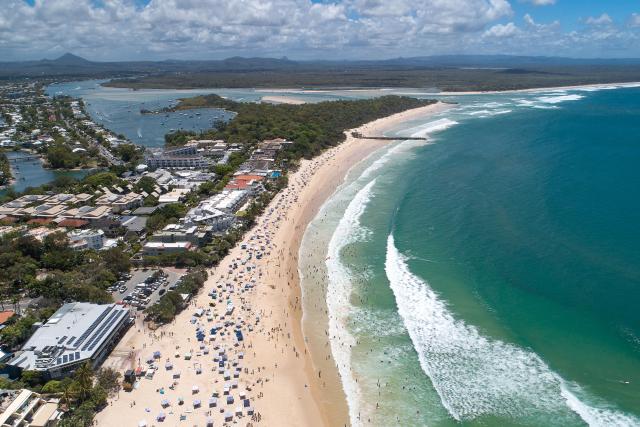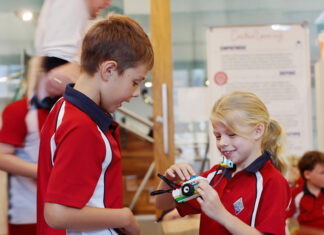After 20 years of water quality monitoring by diverse groups across the Noosa and Mary river catchments the results will now be collated by Noosa Council into a single database available to all and used to inform management actions, and support an aim to achieve an A-rating.
For two decades, water quality monitoring in the Noosa and Mary River catchments has been undertaken through waterwatch programs managed by Natural Resource Management (NRM) groups, including Noosa and District Landcare, Noosa Integrated Catchment Association, and the Mary River Catchment Coordinating Committee.
At Council’s General Meeting on Monday officers explained the purpose of the integrated water quality monitoring program was is to develop a framework for Council, NRM groups and other agencies to better coordinate and manage water quality data.
The program includes database management of historical and future monitoring data; use of this data to develop sub-catchment report cards for the Noosa River; point source and event-based monitoring; deployment of trial remote sensing equipment; and the development of a public facing dashboard.
Staff said the program would support the Environment Strategy’s target of achieving an A rating for the environmental health of the Noosa River and Mary River sub-catchments by 2030.
Healthy Land & Water is soon to release the Noosa River’s 2022 Report Card. The Noosa River catchment has consistently achieved A- ratings for water quality based on environmental condition and social and economic benefit.
Officers said the integrated monitoring program would collate all historical and current data into the State-wide Water Information Management system (SWIM) database, owned by Qldwater and locally updated by Noosa Council, which would ensure consistency and accuracy with data management. Historical and future data would be used to develop sub-catchment report cards which would identify priority areas for management and guide future management actions.
A trial of three automatic remote sensing water loggers, to be installed this financial year, will be equipped with pH, electrical conductivity, dissolved oxygen, temperature, and turbidity probes, with the locations anticipated to be in the Noosa River, Mary River and Kin Kin Creek with information uploaded to a cloud-based platform, Grafana, every 15 minutes.
The data collected from the loggers will be used to identify trends over time, monitor events such as high rainfall where increases in water quality monitoring parameters such as turbidity may occur, and assist with identifying impacts on the catchment to prioritise management actions.
A public dashboard will be set up on Council’s website to provide a platform for the community to access real time data from the water loggers, providing openness and transparency which in turn may support decision making and policy processes. The data will be uploaded to the dashboard through Grafana.
Councillor Joe Jurisevic questioned whether the program would also include data obtained by UnityWater and SEQ from their monitoring of wastewater and treated water plants, saying they do engage as part of the water monitoring program.
Officers said they aimed to first establish council’s own robust monitoring team before any expansion including organisations such as UnityWater and citizen scientists.
Several workshops are planned to be held to consult with internal and external stakeholders involved in the program with an initial workshop having been held in July 2022, with attendees from Noosa Council, Department of Environment and Science (DES), Healthy Land & Water, University of the Sunshine Coast (USC), NRM groups and The Nature Conservancy.
As part of the integrated water quality monitoring program, monitoring for public health purposes is undertaken by Noosa Council’s Environmental Health Branch, officers said. To make sure Noosa’s waterways remain safe to use and meet Public Health Act 2005 requirements, Council’s Environmental Health Branch proactively test water samples for microbes and elevated levels of enterococci bacteria as well as harmful algal blooms. Monitoring is conducted regularly throughout the year at a number of recreational water quality monitoring locations across the Shire, including Gympie Terrace, Little Cove, Sunrise Beach, Burgess Creek (at mouth and 100m up from the creek), Peregian Beach, Noosa Main Beach, Noosa River and Eenie Creek.
The Environment Services Branch received $75,000 in the 2022/2023 budget for the integrated monitoring program with further funding expected to be required for implementation of the comprehensive program.







